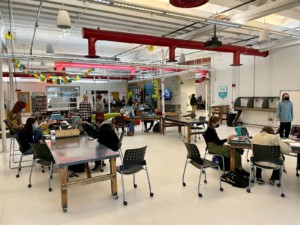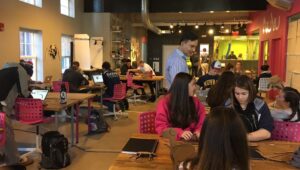Framing the Learning in the Blended Learning Environment

By: Rose Colby
As more models for blended and online learning emerge into the mainstream of educational design, there is still some undercurrent of thought that these models have emerged because students are not successful in the traditional classroom-learning environment. In addressing recovery for such lack of success, it may happen that students are more successful in a blended or online learning opportunity.
This has given rise to the misconception that both blended and online learning may in fact not have the degree of rigor that is thought to be present in the traditional classroom environment.
Let’s be clear about the framework for a high quality competency based learning environment, be it in the brick and mortar classroom environment, blended or online learning opportunity, or the community based extended learning opportunity.
In a high quality competency based learning model, competencies are designed on conceptual understandings within and between a content areas. These ‘big ideas’ provide the deep, rich, conceptual connections across disciplines that invite strategic and extended thinking. With these competencies embedded in units of study, teachers can then specify the performance indicators categorized by Depth of Knowledge to insure that the student is transferring content knowledge and skills in a new setting.
With this in place, the learning environment is then considered in order to customize the learning with the student. In a traditional classroom setting, the competency framing is complemented by designing high quality performance tasks, using project based learning, and integrating technology.
In the blended learning environment, multiple online resources are the primary ‘on ramps’ for the learning pathway with opportunities for students to work in small groups guided by the teacher who takes an active role in facilitation, coaching, and formative learning. In the completely virtual learning opportunities, competencies and performance indicators are designed into the course framework explicitly.
In the Extended Learning Opportunity, the same framework of competencies, often interdisciplinary, are designed into the learning experience. Clear performance indicators that are drawn from the experience are at the heart of the student exhibition or defense of their learning at the completion of the Extended Learning Opportunity.
Whether it is in the traditional classroom, blended or virtual setting, or extended learning opportunity, high quality framing for learning guides the engagement and personalization for the learner. The rigor of student learning is teacher dependent through the design of the competencies, the system of performance assessments and the learning pathway.
Merely categorizing the quality of the learning by its environment is short sighted. We should strive to create rigorous, competency based learning opportunities that have design parameters that clearly set out the learning goal for our students regardless of the space where learning takes place.
Rose Colby is a competency based learning and assessment specialist. She is the co-author of “Off the Clock: Moving education from Time to Competency” (Corwin, 2012).







0 Comments
Leave a Comment
Your email address will not be published. All fields are required.